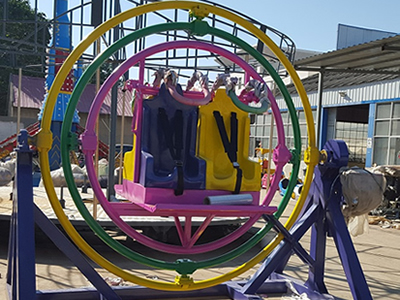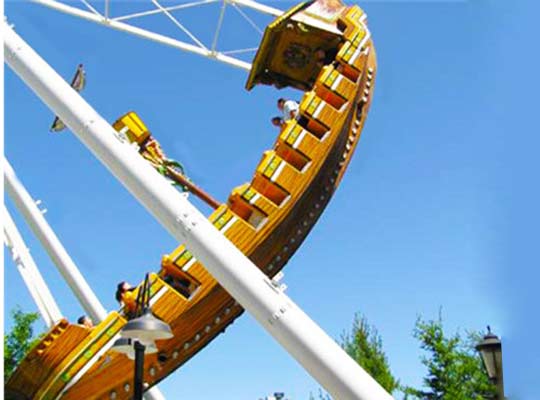The Human Gyroscope is exactly what it sounds like: a gyroscope with a human on the inside. It is a set up of three circles inside of each other. A human pilot stands or sits on the inside of the third ring, his feet locked in a footholder, holding on to an overhead hand protector.
The Genesis
The earliest versions emerged in patent records in 1907 and 1920, but they were all square designs. The first round version was patented in 1964, but it didn’t really hit the global market until Austrian inventor Helmut Suchy patented his version in 1989 and entrepreneur Hermann Dittrich launched a global marketing campaign through his company Contactos Trading.
Originally designed for the inventor’s back therapy, it was soon realized that the machine was not just a useful exercise tool, but also simple fun gym machine. Mr. Dittrich chose the name Aerotrim under which it later became known worldwide.

Its Use
While it may seem that the human gyroscope, or Aerotrim, may cause nausea or dizziness, it really doesn’t, since the rider has to control the movements by shifting his or her body. A forward movement for example would cause the inner circle and rider of the machine to tip forward. In the same way any weight shift of the rider’s body will cause a change in direction, be it vertical, horizontal, sideways or backwards. By shifting and counterbalancing one’s own weight, every muscle in the body comes into action, even those not usually targeted in cardiovascular or any other form of exercises.
As such it is particularly useful as a both exercise as well as workout machine. It found great application in gyms and hospitals, where it was used to exercise people with handicaps, such as blindness. The spinning motion of the machine has been particularly useful to mimic a feeling of weightlessness best table lamps, and thus improving coordination and balance. It was soon adopted by the aeronautical community to train equilibrium in pilots and used by the Korean Air Force as well as Lufthansa and the German space agency to train astronauts.
Popular Exposure
Several variations were developed, such as a children’s version, a wheelchair version as well as a motorized version. It found a large following and popularity throughout the 80s, and was featured much on television and movies, usually as a sci-fi prop. It featured most prominently as an exercise machine aboard the spaceship Enterprise in the eponymous TV series. It was often featured in connection with virtual reality equipment, such as in the movie The Lawnmower Man, but didn’t actually find this application in real life until the late 90s. This version used a motorized version of the Aerotrim, interlocking it with a virtual reality headset and environment. More at http://amusementrides.org/human-gyroscope-rides-sale-beston-amusement/.
Contactos trading eventually bankrupted under the weight of imitators, and various clones came on the market. A few square versions emerged, as well as seated versions and double杝eated versions. The machine is nowadays known under various terms including Aerotrim, GyroGym and simply as the Human Gyroscope.
Today it is most commonly used as an amusement park ride, and while it is indeed a fun and entertaining ride, its origins remain in it being an exercise and astronaut training device.

0